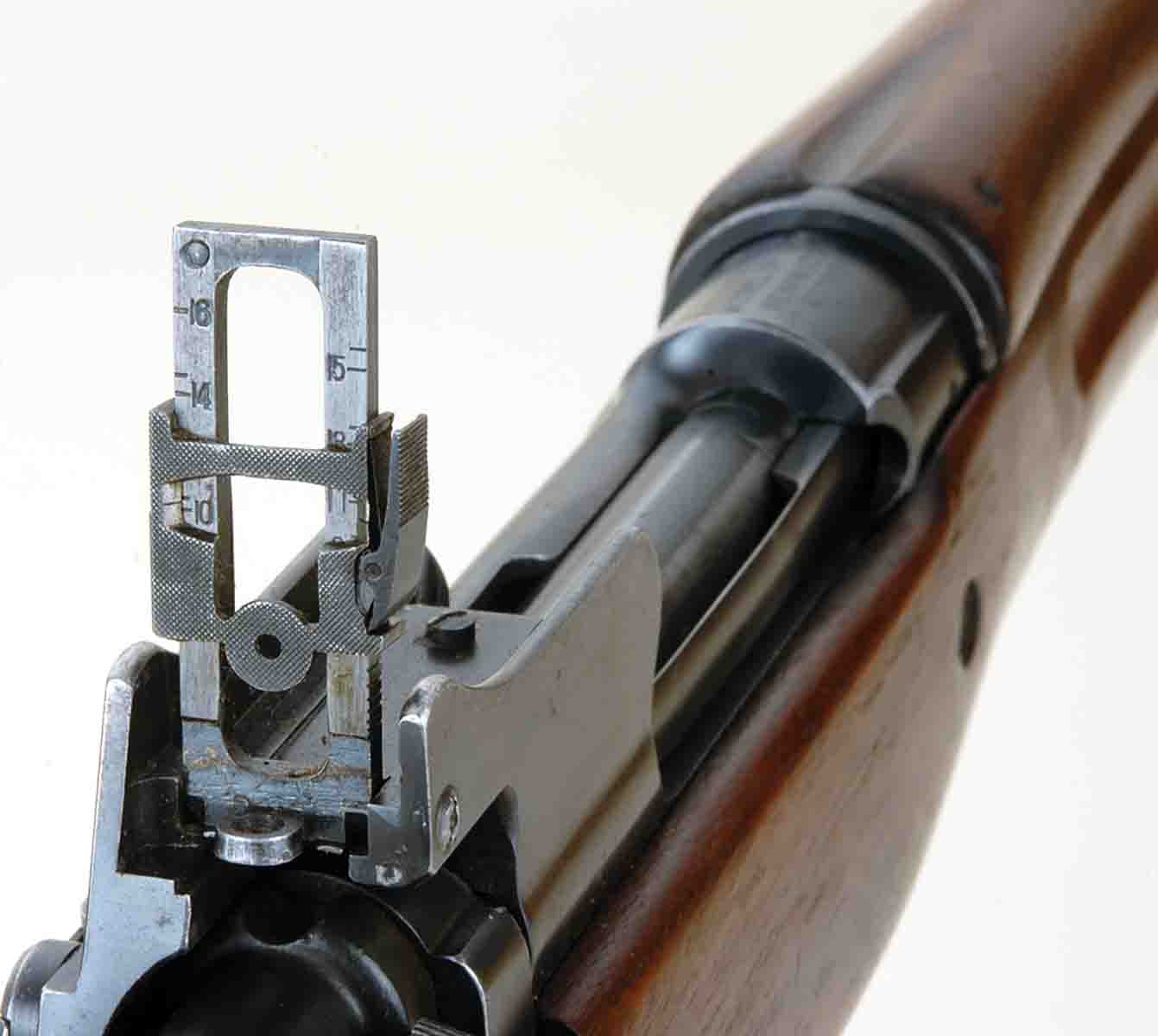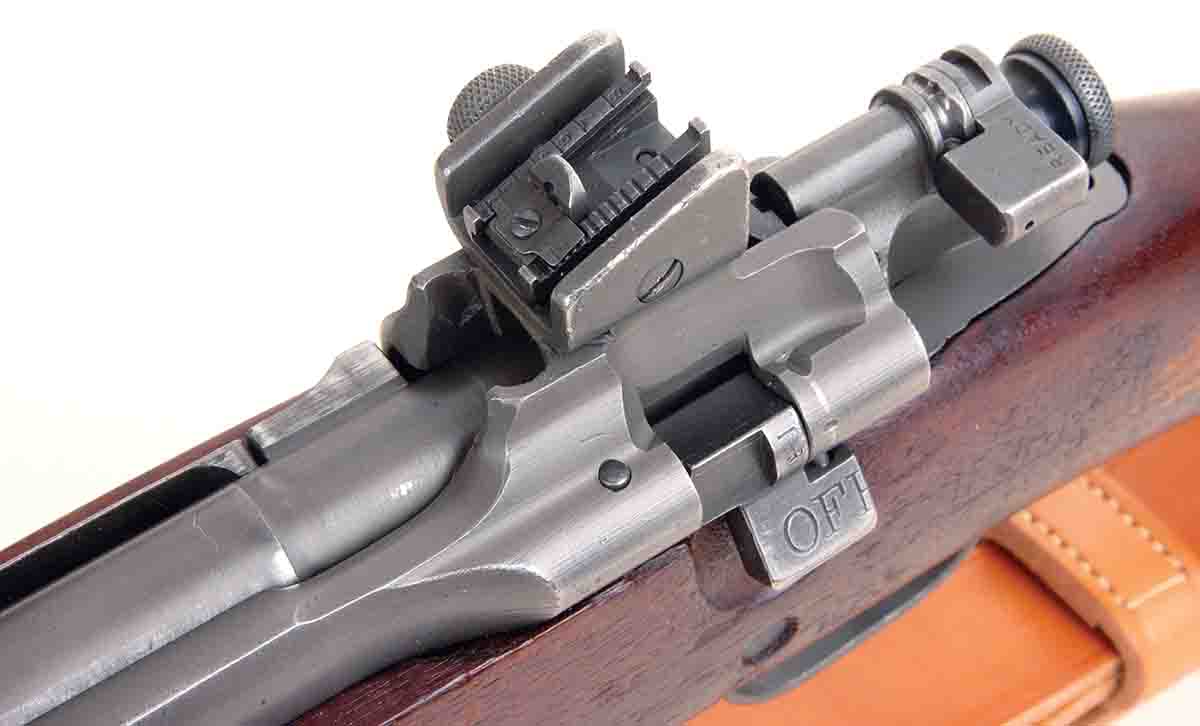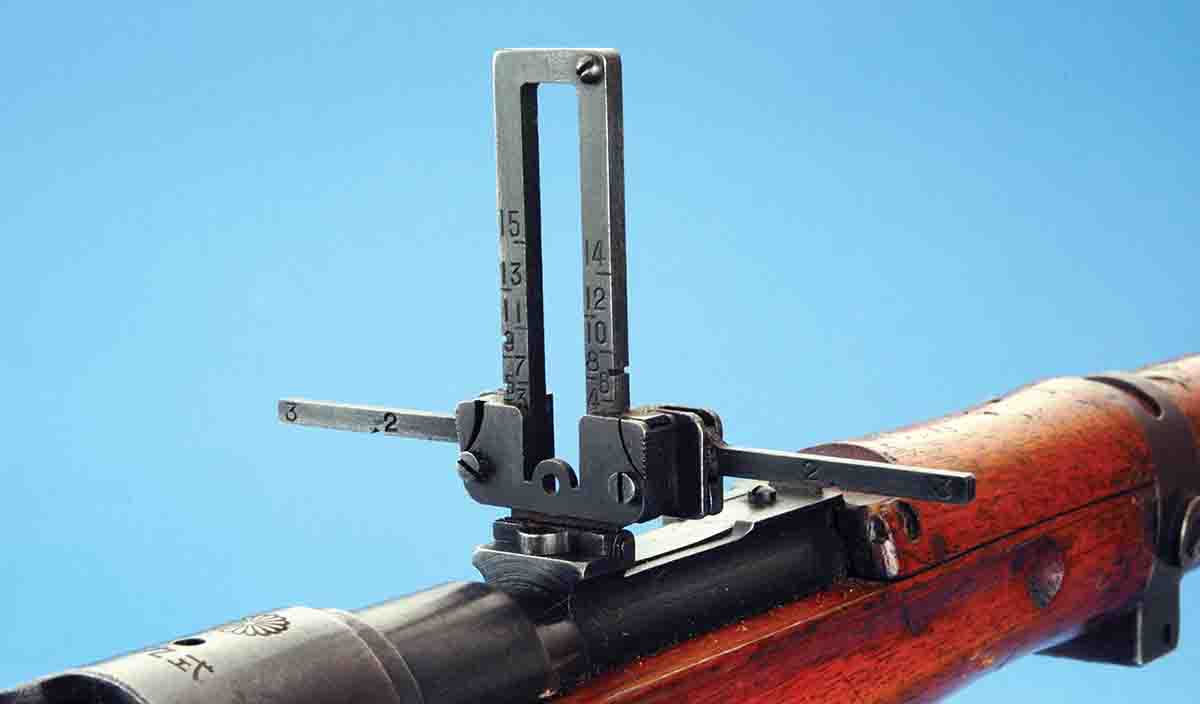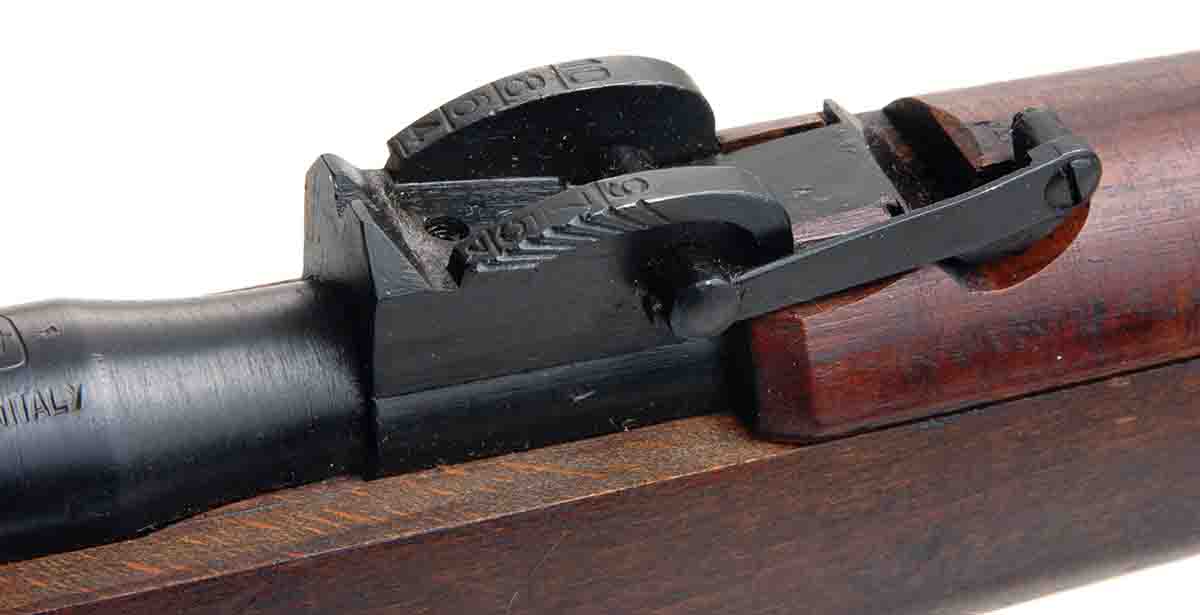Down Range
World War II Infantry Rifle Sights
column By: Mike Venturino - Photos by Yvonne Venturino | September, 23

Let’s start with the U.S. Collectively, for combat use in World War II, the U.S. Army and U.S. Marine Corps fought with M1903s, M1917s, 1903A3s and M1 Garands. All are 30-06s. After the U.S. Army adopted M1917s, patterned after the British P1914, which was designed at the Enfield facility, never again did American battle rifles carry open rear sights. Peep sights were standard right up until the twenty-first century “War on Terror” when M4 carbines began getting optical sights.

With M03A3s and M1 Garands the rear peep sights have click windage adjustments by knurled knobs. Through most of World War II, M1 Garand rear sights were of the “lock bar” design. To adjust that sight, there is a bar on the right side that must be rotated counter-clockwise. Then, changes are made and the bar tightened again. The ‘03A3s have 4-MOA windage clicks but M1s have minute of angle clicks. Garands’ “lock bar” rear sights also have click adjustments for elevation but 03A3s have a sliding aperture setting on a slanted notched base. The standard load for World War II American 30-06s was 150-grain full metal jacket (FMJ) bullets at 2,750 feet per second (fps).
Great Britain began the war with its bolt-action World War I SMLE No. 3. Its open rear sight is of the flip-up ladder-style. When redesigning that basic rifle to the No. 4 Mk I, a double-peep rear sight was incorporated, which was essentially the same in practice as used on Pattern 1914s and U.S. Model 1917s. The same style sight was also chosen for its No. 5 “Jungle Carbine.” As said, none of the British sights have windage adjustments, but all have dovetailed front sights that can moved laterally to obtain zero. (Late in World War II production, some No. 4 Mk I rifles were mounted with a fixed rear sight but I’ve never encountered one.) Standard 303 British military loads used 174-grain FMJs at 2,450 fps.

Another problem with the Type 99 anti-aircraft sight is that it is mounted out on the barrel where normal open rear sights set instead of at the rear of the rifle’s action. Mounted at the action’s rear, a peep sight comes directly to the shooter’s eye and automatically centers the front sight blade. However, where the Japanese put the sight, one’s eye must first search for its aperture and then find the front blade. Also, it’s a cinch that the folding “wings” on the Type 99s rear sight was forever snagging on heavy brush when fighting on jungle islands in the South Pacific or in Burma. I’ve seen many Type 99s with their sights’ wings removed, likely for that reason. Nominal ballistics of the 7.7mm Japanese was 174-grain FMJ bullet at 2,400 fps.
Japan’s other primary infantry rifle was the Type 38 6.5mm. It used the same style rear sight as found on so many infantry rifles of the first decades of the twentieth century. It was a simple ladder-type open rear. What is curious about it, however, is its scale. I find it to be like no other in that the numbers start at 5 and continue to 24. (That’s meters I presume.) Conversely, 6.5mm Japanese is one of the lightest front line cartridges used in World War II. Nominally ballistics: 139-grain FMJ at 2,500 fps.

Leave it to the Italians to come up with the most curious rear sight, as was mounted on the Model 1941 6.5mm. Its combat sight is a fixed hunk of steel with 300-yard zero, but for extended range, a sight leaf rotates backwards. There are various numbered notches for it to rest on.
Graduations have not been listed on these rear sights but in the table (above) I have listed the ones on my personal rifles. Most were overly optimistic as to practical combat use because they were devised by early to late nineteenth and early twentieth century ordnance officers who envision entire infantry units firing in volleys. That seldom, if ever, happened in World War II. Also, a word from my personal experience; don’t count on the scales of those battle sights being accurate. Bullet shapes, velocities and even atmospheric conditions will determine their actual hitting at distance. It’s best to shoot and determine your own sight settings.
To see our YouTube World War II series videos, subscribe for free to Handloader TV.
.jpg)


